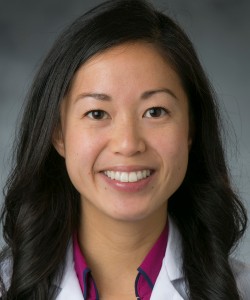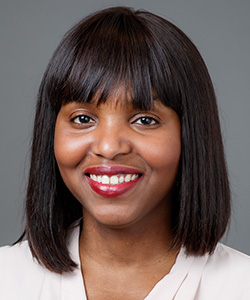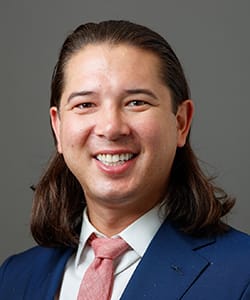Celebrating Asian American and Pacific Islander Heritage Month 2024
Asian American, Native Hawaiian, and Pacific Islander Heritage Month is celebrated in the United States during the month of May, and recognizes the contributions and influence of Asian Americans, Native Hawaiians and Pacific Islander Americans to the history, culture, and achievements of the United States.
In 1992, the official designation of May as Asian Pacific American Heritage Month was signed into law. This expanded what had been Asian/Pacific American Heritage Week since 1978. In 2021, a presidential proclamation expanded this to include Native Hawaiians. The month of May was chosen to commemorate the immigration of the first Japanese to the United States on May 7, 1843, and to mark the anniversary of the completion of the transcontinental railroad on May 10, 1869.
The Diversity SIG is excited to celebrate AAPI members of the regional anesthesia and pain medicine community and to learn from their various experiences and areas of expertise.
An Interview with Amanda Kumar, MD, and Uchenna Umeh, MD


Dr. Umeh: Can you tell us where you work and your current leadership roles at your home institution, and other societies?
Dr. Kumar: I am a regional anesthesiologist at Duke University , where I serve as the program director for our regional anesthesiology and acute pain medicine fellowship. I have a specific interest in medical education and simulation, and I am fortunate to serve as the GME simulation liaison for Duke's Human Simulation and Patient Safety Center. In the clinical sphere, I am a part of Duke's perioperative leadership group. I am also a member of ASA's educational track subcommittee on regional anesthesia and acute pain, ASRA Pain Medicine/ESRA's joint committee on education in ultrasound guided regional anesthesia, and ASRA Pain Medicine's faculty development committee.
Dr. Umeh: May is Asian and Pacific Islander (AAPI) Heritage Month, how do you celebrate during this month?
Dr. Kumar: My husband and I read books with our daughters that highlight the rich heritage of Asians and Pacific Islanders and the important contributions they make to our country.
Dr. Umeh: Why do you think it's important to recognize and celebrate AAIP Heritage month?
Dr. Kumar: The power of seeing someone that looks like you and is able to accomplish something great has an intangible impact. Celebrating this showcases that we all can make a difference, no matter what we look like.
Dr. Umeh: What challenges have you faced on your journey so far as a physician and anesthesiologist? How did you overcome them?
Dr. Kumar: It's a fine balance to be fully invested at work yet also fully present at home. While I am continually fine-tuning that balance, I am really lucky to have an incredibly supportive husband who is my greatest cheerleader and also carries an equal load at home.
Dr. Umeh: Why is diversity and inclusion important in medicine and in regional anesthesia and pain medicine?
Dr. Kumar: A deliberate focus on diversity and inclusion allows us to work together as a community to identify and dismantle systemic barriers that may limit the advancement of marginalized groups. And importantly, it promotes compassionate and equitable care for all of our patients.
Dr. Umeh: As a fellowship program director, are there methods to continue to increase recruitment and retention of under-represented minorities to our subspecialty?
Dr. Kumar: We provide education regarding implicit bias to our interviewers, and incorporate behavior-based questions about equity, diversity, and inclusion into our interview process. We try to highlight opportunities for career development as well as mentoring programs that are available at Duke to address the unique needs of underrepresented minorities in training. But there is so much more work to be done!
Dr. Umeh: What are the barriers to diversifying the workforce in anesthesiology and in our specialty specifically?
Dr. Kumar: While there is a push to establish formal leadership programs for underrepresented faculty and trainees, the onus can sometimes be placed on the individual to seek out those opportunities and to commit unpaid personal time. Offering opportunities for professional development should come hand-in-hand with time and salary support to create an inclusive workplace that promotes diversity in our specialty.
Dr. Umeh: Who has served as an inspiration in your life?
Dr. Kumar: My parents are an incredible inspiration to me. As war refugees of the Cambodian genocide, they immigrated to the US at the age of 22 knowing no English, and with less than $4 and only enough clothes to fill a backpack. Sponsored by a church in a small town in Mississippi, they were fortunate to have the love and support of a generous community who helped them assimilate to a new country. My mother has the kindest heart, and my father is the most industrious person I know - from learning English by watching cartoons, he went on to earn a doctorate in electrical engineering and recently retired from the US Air Force.
Dr. Umeh: What career accomplishment makes you most proud?
Dr. Kumar: My greatest career accomplishment is being selected as the Duke Anesthesiology Educator of the Year by the graduating class of 2020. In a time marked by uncertainty due to the COVID-19 pandemic, it was the most wonderful honor to be a part of their formative training.
Dr. Umeh: What advice would you give to young physicians and trainees as they navigate their careers?
Dr. Kumar: It's normal to have imposter syndrome - put yourself out there even if it makes you uncomfortable. Ask people you admire for their advice!
Dr. Umeh: Is there anything else you would like to note?
Dr. Kumar: Thank you, Uchenna, for the invitation, and for all of your phenomenal work on diversity in regional anesthesia and acute pain medicine!
Amanda Kumar, MD, is an assistant professor of anesthesiology and program director of the regional anesthesiology and acute pain medicine fellowship at Duke University in Durham, NC. She received a B.S. in biochemistry and B.A. in economics from Case Western Reserve University. Dr. Kumar received her medical degree from Johns Hopkins University in Baltimore, MD, and completed her anesthesiology residency training at Stanford University in Palo Alto, CA, where she served as chief resident. She completed her regional anesthesiology fellowship at Duke Univeristy and stayed on as faculty after graduation.
An Interview with Lisa Doan, MD, and Uchenna Umeh, MD
/doan_lisa.png?sfvrsn=3be98053_1)

Dr. Umeh: Can you tell us your name, where you work and your current leadership roles at your home institution and other societies?
Dr. Doan: I'm Lisa Doan. I'm an Associate Professor of Anesthesiology, Perioperative Care, and Pain Medicine at NYU Grossman School of Medicine. I serve on the ASA Pain Committee and am Vice Chair of the Evidence Analysis Committee for the International Pain and Spine Intervention Society.
Dr. Umeh: May is Asian and Pacific Islander (AAPI) Heritage Month, how do you celebrate during this month?
Dr. Doan: I will attend an event hosted by my kids' school.
Dr. Umeh: Why do you think it’s important to recognize and celebrate AAPI Heritage month?
Dr. Doan: It's an opportunity to teach and learn more about Asian and Pacific Islander culture.
Dr. Umeh: What challenges have you faced on your journey so far as a physician and anesthesiologist? How did you overcome them?
Dr. Doan: I started in basic science research prior to transitioning to clinical research, and I experienced several disappointments before ultimately obtaining research funding. I've been fortunate in having supportive departments and chairmen. Perseverance and a little bit of luck played a role in overcoming these challenges.
Dr. Umeh: As a pain researcher, some of your work has focused on the use of ketamine on the development of chronic pain in patients undergoing mastectomy surgery. You also examined how social determinants of health influences development of chronic pain. Why is diversity and inclusion important in medicine, particularly in pain medicine? How has your institution worked to address disparities in pain medicine and also in clinical research? What can other institutions learn from your study team?
Dr. Doan: Disparities in access and outcomes in medicine and pain medicine exist. In our research we aim to recruit diverse participants to improve equity. Selecting sites that serve diverse patient populations and including diverse study team members have helped in our goal of recruitment of diverse participants.
Dr. Umeh: Who has served as an inspiration in your life?
Dr. Doan: I'm inspired by my parents. They fled Vietnam and came to the US at the end of the Vietnam War. They had blue collar jobs and worked hard to support my sisters, me, and other family members, including those still in Vietnam. They instilled the importance of family, education, and hard work.
Dr. Umeh: What career accomplishment makes you most proud?
Dr. Doan: I'm proud of my promotion to associate professor.
Dr. Umeh: What advice would you give to young physicians and trainees as they navigate their careers?
Dr. Doan: Professionalism and perseverance are key.
Biography
Dr. Lisa Doan is an Associate Professor in Anesthesiology, Perioperative Care, and Pain Medicine at NYU Grossman School of Medicine. She serves on the ASRA Pain Abstract Review Committee. Dr. Doan is an NIH-funded investigator with research focusing on mechanisms, biomarkers, and interventions for pain.
Accessibility Barriers to Acupuncture Care
Written by: Christopher Li, MD
Acupuncture is a unique practice originating from Chinese medicine that involves needle stimulation of specific body points for the amelioration of both physical and mental disease symptoms. Acupuncture in the United States is a “complementary medicine”, a category of treatments used in conjunction with standard medical care which also include massage therapy, yoga, herbal medicines, and meditation. Research on such treatments has undergone a surge in recent years, with acupuncture rapidly assuming a leading role in the field of clinical research on complementary medicine. A study analyzing acupuncture research between 1988 and 2015 found that the US produced 1,638 high quality scientific articles on acupuncture compared to 2,076 that came out of China during this period.1
The interest in and use of acupuncture has also spiked in the 21st century, with data from the National Health Interview Survey showing a 50% increase in the number of acupuncture users between 2002 and 2012.2 In 2012, 6.4% of US adults reported using acupuncture in their lifetime, with 1.7% having used acupuncture in the past year. 47 states have passed legislation on acupuncture and thousands of acupuncture clinics have opened since the first state regulatory law was passed on acupuncture practice in 1973.3
Research and use of acupuncture have been on the rise in the US, but who really benefits from this treatment modality? Surveys show that patients in this country who use acupuncture are more likely to be female, middle to upper class, college educated, and European-American. The least likely groups to utilize acupuncture are African Americans and people who identify as Hispanic, as well as those with lower household education and income.4,5 A study examining the reasons patients do not use complementary medicines found that the majority of patients either don’t feel that they need this type of treatment or have little to no knowledge of the treatment at all.6 Insurance coverage (or lack thereof) and cost were two other factors cited as reasons for non-use of acupuncture. Median cost of care in 2007 was $122 per person, with more than 25% of users paying $75 or more and Medicare only covers acupuncture as a treatment for low back pain while conditions such as infertility, insomnia, nausea, depression, and anxiety are top reasons for patients to see an acupuncturist.2,3,7 Such conditions have not only economic, but also social costs when left untreated. Similar to the state of healthcare nationally, we see a disparity in complementary medicine for minoritized and underserved groups.
This leads to the question: if acupuncture was more accessible to minoritized groups, would they use it? Would it be an effective treatment option? Boston Medical Center (BMC), a large urban healthcare center, created a free care acupuncture clinic through a partnership with a nearby acupuncture school. A licensed acupuncturist from the school would supervise students placed in the clinic on semester long rotations and care for patients in existing hospital space. BMC found that when minority groups do get acupuncture treatments, the vast majority rate their experience as positive and would recommend acupuncture to a friend or family member.8 The main complaints across both pediatric and adult patients treated at the clinic included musculoskeletal pain, anxiety/depression/stress, and non-pain conditions (insomnia, nausea, fatigue, high blood pressure, asthma, and smoking cessation). During 2004-2006, the acupuncture clinic received 544 visits, with a 65% increase in patients seeking acupuncture from the first to the third year of opening.9
BMC’s clinic demonstrates that with strategic removal of economic and healthcare knowledge barriers to acupuncture accessibility, minority and underserved pediatric and adult patient populations can receive satisfactory acupuncture care. The group remark upon six factors that led to their success: a hospital and acupuncture school in close proximity, institutional encouragement of innovation, willingness to change (creation of new credentialing/privileges), willingness of hospital staff to try acupuncture and receive education on the modality, inner city location for ease of patient access, and an externship model (improved sustainability not dependent on outside funding or service reimbursement).
Another acupuncture treatment model that has risen in response to the cost and limited access to acupuncture is the community acupuncture clinic. Two features make this model feasible: utilization of common space with multiple reclining treatment chairs (up to 6 patients can be treated by 1 practitioner per hour) and a sliding-scale fee ($15-40) that patients determine what they can afford to pay. Affordable visits engender more frequent visits, which furthers the cumulative benefits of acupuncture. Since 2004, nearly 200 community acupuncture clinics have opened in the US.10 The fact that these models are not free nor subsidized by grant funding gives them a more sustainable foothold.
Lack of knowledge and financial burden are obstacles to acupuncture treatment in the US that contribute to poor accessibility for minoritized and underserved patient populations. Luckily, there are acupuncture care models that successfully utilize cooperation, innovation, and education to provide this complementary practice to communities that have not previously been exposed to acupuncture. As acupuncture continues to gain popularity and increased research interest, innovative methodologies are needed to improve availability of acupuncture to these groups.
Anesthesiologists care for patients that experience perioperative pain, side effects of pharmacologic interventions, and postoperative anxiety and depression. These conditions can benefit from acupuncture treatment. Even for non-acupuncturists, enhanced knowledge of this modality and locating affordable acupuncture clinics for patient referral is a method to reduce the current disparity in acupuncture treatment among minoritized and underserved patients.
References
1. Kung YY, Hwang SJ, Li TF, et al. Trends in global acupuncture publications: An analysis of the Web of Science database from 1988 to 2015. J Chin Med Assoc 2017;80(8):521–525. https://doi.org/10.1016/j.jcma.2017.01.010.
2. Acupuncture: What you need to know. National Center for Complementary and Integrative Health. https://www.nccih.nih.gov/health/acupuncture-what-you-need-to-know. Published October 2022. Accessed April 2, 2024.
3. Gong C. A retrospective look at 50 years of acupuncture in the United States. Med Acupunct 2022;34(2):83-87. https://doi.org/10.1089/acu.2021.0049.
4. Bishop FL, Lewith GT. Who uses CAM? A narrative review of demographic characteristics and health factors associated with CAM use. eCam 2010:11-28. https://doi.org/10.1093/ecam/nen023.
5. Burke A, Upchurch DM, Dye C, et al. Acupuncture use in the United States: findings from the National Health Interview Survey. J Altern Complement Med 2006;12(7):639-48. https://doi.org/10.1089/acm.2006.12.639.
6. Burke A, Nahin RL, Stussman BJ. Limited health knowledge as a reason for non-use of four common complementary health practices. PLoS One 2015;10(6):e0129336. https://doi.org/10.1371/journal.pone.0129336.
7. Nahin RL, Barnes PM, Stussman BJ, et al. Costs of complementary and alternative medicine (CAM) and frequency of visits to CAM practitioners: United States, 2007. Natl Health Stat Report 2009;18:1–14.
8. Highfield ES, Spellman L, Barnes LL, et al. Profile of minority and under-served patients using acupuncture. Complement Ther Med 2012;20(1-2):70-2. https://doi.org/10.1016/j.ctim.2011.09.005.
9. Highfield ES, Barnes L, Spellman L, et al. If you build it, will they come? A free-care acupuncture clinic for minority adolescents in an urban hospital. J Altern Complement Med 2008;(14)(6):629-36. https://doi.org/10.1089/acm.2008.0021.
10. Chao MT, Tippens KM, Connelly E. Utilization of group-based, community acupuncture clinics: a comparative study with a nationally representative sample of acupuncture users. J Altern Complement Med 2012;18(6):561-6. https://doi.org/10.1089/acm.2011.0128.

Christopher Li, MD, is board certified anesthesiologist at Hospital for Special Surgery (HSS) specializing in regional anesthesiology and acute pain management for orthopedic surgery. Dr. Li completed his internship and anesthesiology residency at Georgetown University Hospital in Washington, DC, followed by his regional anesthesiology and acute pain management fellowship at HSS. In addition to training in these fields, Dr. Li completed certification in medical acupuncture and as a yoga instructor. He is currently involved with research studies examining integrative medicine techniques such as acupuncture and meditation to improve perioperative care in patients undergoing orthopedic surgery.